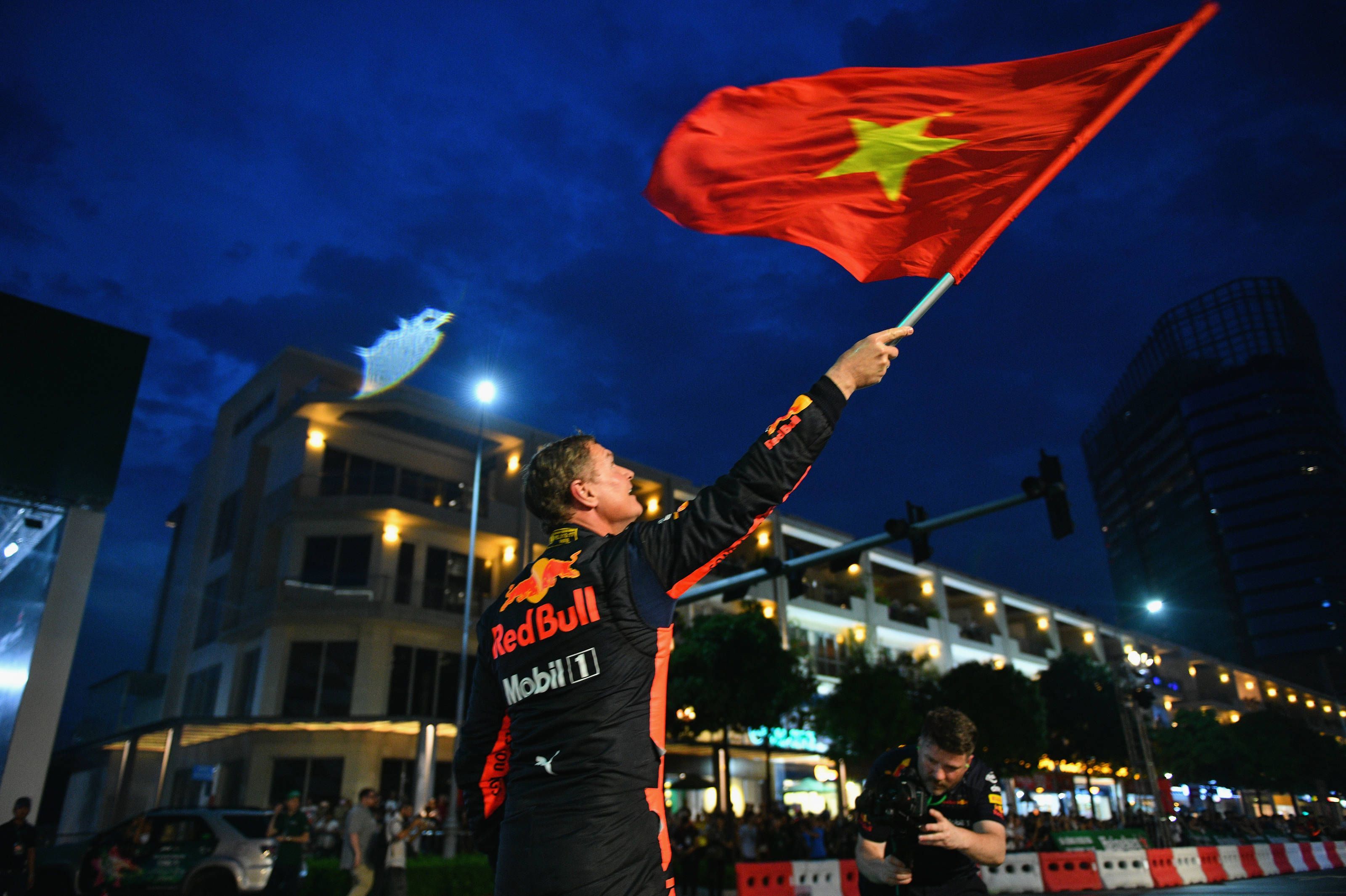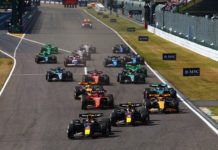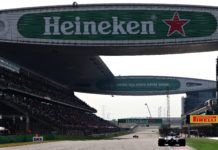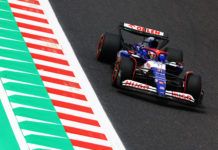Liberty Media confirms the plans to host Formula 1’s Vietnam GP after agreeing to a deal as it expands to a new country in South East Asia.
The plans to stage a race in Vitenam has been in talks for years but the then boss of F1, Bernie Ecclestone shot down the idea initially. However, the talks started again with the new owners, Liberty Media.
Vietnam GP gained momentum last year and it seemed certain to take place after the Government of Vietnam approved the plans to stage the race few months back. It has now been confirmed to take place in April 2020 in Hanoi – the capital city of Vietnam.
Reports suggests that #Vietnam will officially reveal the track layout of the grand prix to be staged in #Hanoi next week while also announcing #VietnamGP for the 2020 season in a April slot. #F1 | @F1 @fia @MsportExtra @JunaidSamodien_
— Darshan Chokhani (@DarshanChokhani) November 1, 2018
The 5.565 km street circuit will be promoted by Vingroup as the Vietnam GP joins Singapore, China and Japan in the current list of Asian countries hosting a grand prix event. It is also Liberty Media’s first new grand prix deal.

F1’s boss Chase Carey said: “We are delighted to announce that Hanoi will host a Formula 1 Grand Prix. Since we became involved in this sport in 2017, we have talked about developing new destination cities to broaden the appeal of Formula 1 and the Vietnamese Grand Prix is a realisation of that ambition.
“We are thrilled to be here in Hanoi, one of the most exciting cities in the world right now with such a rich history and an incredible future ahead of it. This is the perfect formula for Grand Prix racing and I look forward to this becoming a real highlight of the F1 calendar.
“Our Motosport team, working in collaboration with the City of Hanoi and promoter Vingroup, has worked to enable a circuit that will not only test the drivers but also ensure that our fans enjoy the racing spectacle. We are really looking forward to seeing Formula 1 cars speeding around the streets of this fantastic city from 2020.”
Chairman of City of Hanoi, Nguyen Duc Chung said: “We are proud to be hosting the Formula 1 Vietnam Grand Prix, and showcasing the city of Hanoi to the world with its special combination of ancient and moden beauty from 2020.
“It’s a further demonstration of Vietnam’s ability, as one of the fastest growing economies in the world to host events on a global scale and attract tourism to the country. It provides an opportunity for inward investment to Vietnam and importantly to bring the exciting wheel to wheel racing of Formula 1 to the people of Vietnam.”
Vingroup’s Nguyen Viet Quang, added: “We are excited to see that our work with Formula 1 to secure this deal has finally come to fruition. An essential part of this collaboration has been making sure that we not only showcase the city of Hanoi but also deliver an exciting race for Formula 1 fans in Vietnam and around the world.
“With the mission of ‘a better life for Vietnamese people’, VinGroup wants to bring this race to Vietnam because of the general benefits to the society such as more jobs will be created, the infrastructure of Hanoi will be upgraded, and other bigger worldwide events will be encouraged to take place in Vietnam.
“For VinGroup individually, through the F1 racing event, we are going to proclaim the first Vietnamese car manufacturer, VinFast, to millions of audiences in the world.” F1 has released a handy guide for the fans to know about the circuit.
F1’s guide to Vietnam GP:
F1 is blessed with a plethora of stunning turns and corner sequences scattered across the world’s great racing circuits, so in creating a new track, it makes sense to take inspiration from them.
That’s what the architects of the Circuit of The Americas, the current home of the United States Grand Prix, did. They drew creativeness from the quick Maggotts-Becketts-Chapel sequence at Silverstone and Istanbul’s multi-apex Turn 8 among others.
The same strategy was employed for Vietnam’s new track, located on the western side of the city in the vicinity of the My Dinh National Stadium. And that means it’s not your typical street circuit – far from it…
The aim was to create a unique hybrid layout, fusing a street circuit’s characteristics with a permanent countryside track layout within the confines of the city’s topography.
There was a real desire to steer away from humdrum 90-degree road-junction type corners and foster a layout that facilitates wheel-to-wheel racing while retaining a closed-in street feel that makes city race tracks so demanding for drivers.
Turns 1 and 2 are based on opening corners at Germany’s Nurburgring – known as a red zone for overtaking. In 2006, you may remember Juan Pablo Montoya sweeping by Giancarlo Fisichella by using the long straight for slipstream and completing his pass in the braking zone for Turn 1.
Turns 12 through to 15 may look familiar, too. They have been inspired by a section of the famous Monaco street circuit, from Turn 1 and the run up the hill to Massenet.
The Turn 16-19 sequence that follows features fast changes of direction reminiscent of the sweeping iconic Esses at Suzuka, while the final three corners take inspiration from Malaysia’s Sepang – the fast left-right followed by a tightening radius entry.
That tricky and challenging final sequence, which completes the lap, offers the potential for mistakes and opens the door for a chasing driver to pick up a slipstream and launch an attack into the first turn.

Circuit Design:
The Hanoi Feasibility Group provided suggestions of potential locations, track layouts and associated CAD (Computer Aided Design) data to F1’s Motorsports team, who subsequently built a simulation model of the circuit to carry out lap simulation analysis.
It was at this stage that anticipated car speeds, G-forces and the overall flow and characteristics of the circuit could be assessed.
The final design will be the culmination of a collaboration between F1’s Motorsports team, circuit design company Tilke (who have been responsible for designing many of F1’s best tracks), the City of Hanoi authorities and the race promoter, with governing body the FIA also part of the process.
Circuit Expectation:
The circuit features a range of corners from a slow-speed hairpin and technical slow- to medium-speed corner combinations to high-speed esses and flat-out corners and long straights – one of which is 1.5km in length, with expected speeds of 335km/h through the speed trap.
The opening two sectors lean towards slower-speed turns and longer straights while the final sector will put a premium on cornering.
The long straights will create a challenge for the teams, as they will have to balance wing levels to maximise speed on the straights while generating downforce to attack and defend through the corner sequences.
Intriguingly, the pit lane also misses out the last and first corners, which should reduce the amount of time it takes to complete a pit stop and therefore make a multi-stop strategy more enticing and viable.




















